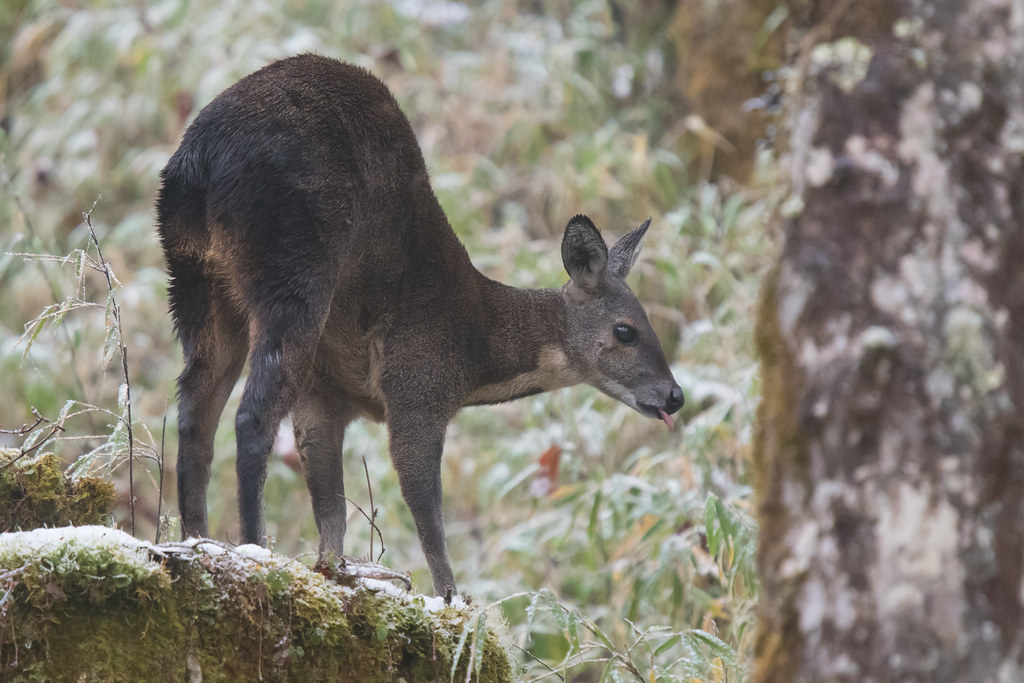
Tim writes: Forest Musk Deer (Moschus berezovskii) is a highly elusive, little-photographed species of deer that is classified by IUCN as “Endangered”, mainly due to hunting for its musk glands, used in Chinese medicines and for perfumes. There appear to be very few (correctly identified) wild photographs of this species on the whole internet and even Wikipedia only has an old stuffed specimen to illustrate the species. This is a female as males have prominent fangs. They have a kangaroo-like head and a creamy throat with a dark stripe down the centre, just about visible here. They inhabit high altitude forests (1000-3800m) but remain largely hidden in the bamboo understorey. I photographed this individual, sticking her tongue out, at Labahe in Sichuan at an elevation of about 3000m. She had been resting on top of a mossy tree stump but stood up as we approached.
True Musk Deer of the genus Moschus comprise seven species and Forest (aka Chinese) Musk Deer are only found in southern and central China and northermost Vietnam but they are rarely seen as their numbers are severely depleted. They are also known as Dwarf Musk Deer as they are the smallest species, weighing only 6-9kg, which is lighter than the average Christmas Turkey!
The scientific name Moschus berezovskii commemorates the Russian Explorer and naturalist Mikhail Berezowski (died 1911) who collected in Sichuan on two expeditions; 1884-7, 1892-4. Moschus simply means musk and the British wild flower Moschatel comes from the same word as it has a musky smell.
[registration_form]